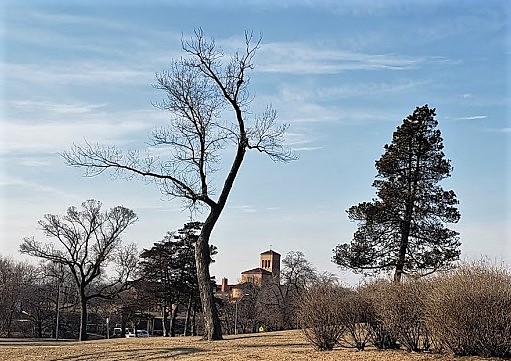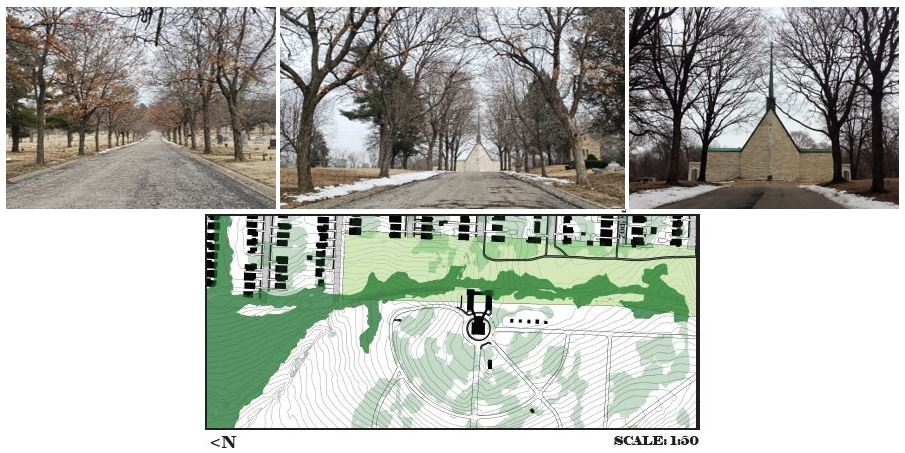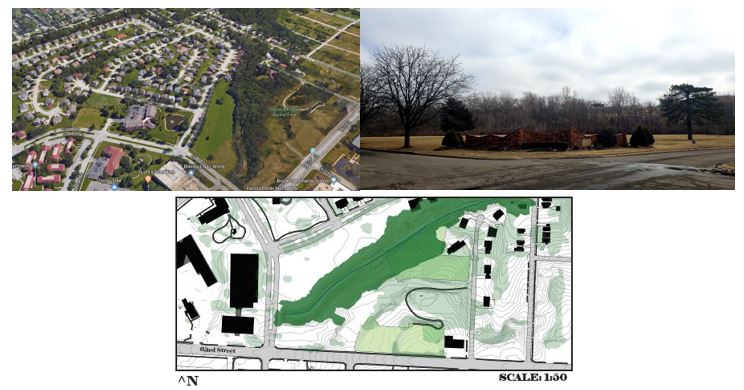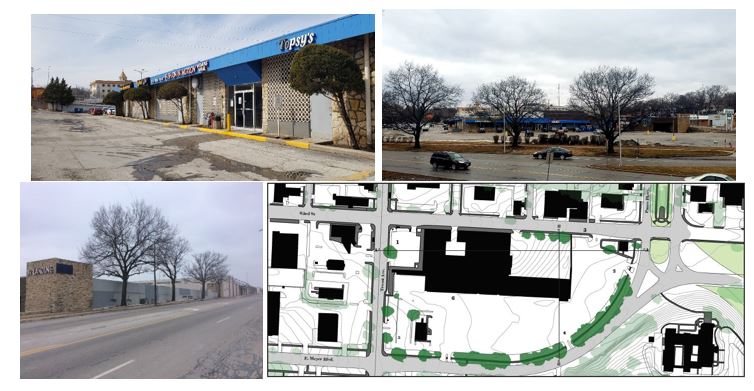
It should go without saying that trees are one of the most important natural features on Earth. They play a significant role in our urban environment by removing the carbon dioxide from the atmosphere emitted from vehicles and can suppress flooding by reducing the effects of storm water runoff. They can provide a refuge from the beating sun on a hot summer’s day or shield us from the wind during the frigged winter months.

When we strategically apply these natural benefits to areas within the public realm it can significantly improve the well being of the population which inhabits it. When examining the 63rd St. corridor, examples of useful and efficient tree placement can be seen throughout. Three key locations in the area highlight these benefits in a number of ways.

The Forest Hill Calvary Cemetery, located at Troost Ave. and E. Gregory Blvd, has one of the highest concentrations of trees within the study area. The row of trees lining either side of the main road create a sense of arrival and place-making that leads one to the chapel at the end. In addition to the aesthetic appeal that these trees offer, they also provide screening from those passing by on the street and surrounding neighborhood.

The Nazarene Theological Seminary also has trees that add to the aesthetic appeal of the property. More importantly however, their placement plays a pivotal role in the conservation of the building’s energy. Located high above Paseo Blvd., it would be isolated and exposed to the setting sun without the shade provided by the line of trees located on the south side of the building. These trees help to block the impact of the sun and cool the building, in turn, requiring less amounts of energy in the hot summer months.

Located just outside of a designated FEMA flood zone and north of Mill Creek, the Citadel neighborhood is at risk of being subject to the many hazards that inertly come with living in such areas. The heavy concentration of mature trees which line the creek bed and the surround the neighborhood play a pivotal role in lowering these flood risks. The strong healthy roots absorb and store water while their canopy’s above capture rainfall and later release it back into the atmosphere.

While the areas surrounding it demonstrate a number of ways in which trees can benefit the public realm, these examples are hard to come by at the Landing Mall. For instance, the small trees that line the entrance which serve as accents alongside the mix of materials that make up the exterior of the building do little in terms of aesthetic appeal. The southern edge of the property along Meyer Boulevard, where the highest concentration of trees are located, continues on with the spacing and standards typically seen along the Parks and Boulevard system. However, because of the malls scarcity in signage these large oak trees often block the view of advertisements from potential consumers and patrons. Lastly, the trees located along 63rd St. make the narrow crumbling sidewalk, next to the busy, heavily trafficked corridor feel even smaller making for an even less enjoyable pedestrian experience. If done right and placed in the proper locations trees could be a great way to improve the Landing Mall. They could be used in the enormous parking lot in places that could benefit the cost of energy, lower the sites heat island effect, and break up or divide parking spaces. They could also be used to create a more defined entrance and appealing place to walk. In addition, they could be added along the Troost corridor to make a more comfortable place for those waiting for their next bus ride.